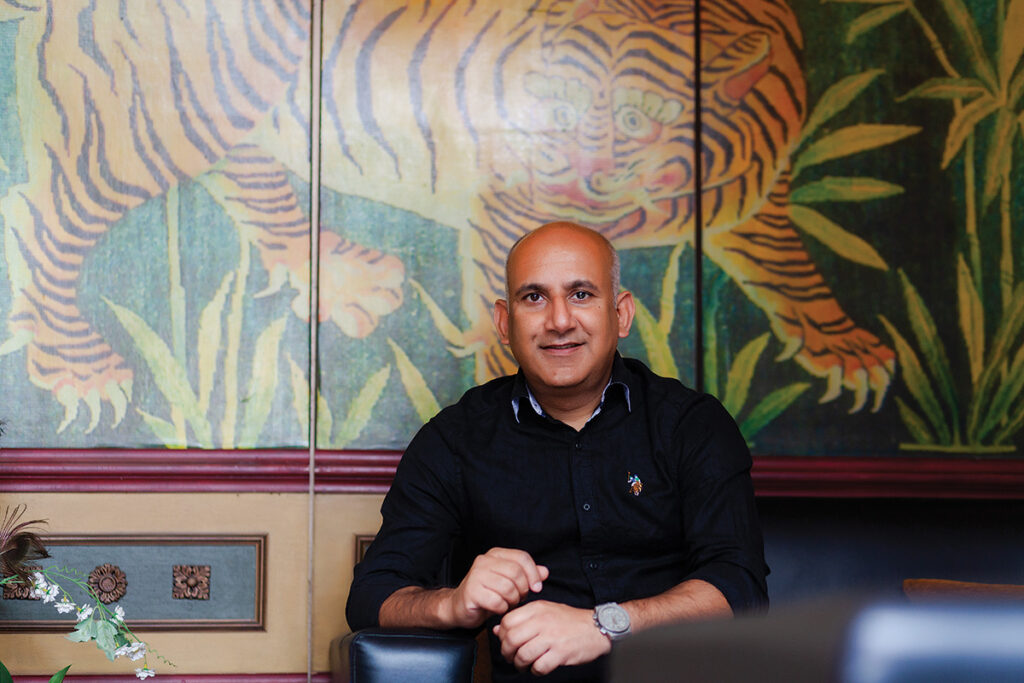
Nepal’s tourism sector faced a loss of approximately Rs 40 billion till July 21 due to the lockdown. It is estimated that the industry faces a loss of Rs 10 billion a month during the lockdown in the hospitality sector comprising hotels, aviation and travel. Approximately one million workers depend on the industry with 60% employees facing job cuts and losses. In 2018, there were a total of 129 star hotels and 1,125 non-star hotels in Nepal, with a cumulative bed capacity of 40,856, while over 2,500 standard restaurants operated in Kathmandu, Pokhara and Chitwan alone. Similarly, 3,508 travel agencies, 2,649 trekking agencies, 73 rafting agencies, 70 paragliding companies, and 77 tourist transportation service were in operation. Likewise, there were 4,126 tourist guides, 16,248 trekking guides, and 253 river guides (WB).
The total loan exposure of tourism sector at the end of the eight months of the financial year 2019/20 was Rs 134 billion accounting for 4.2% of the total loans and advances of the country’s banking sector.
Tourism has a large multiplier effect since it is labour-intensive and has strong linkages with agriculture, retail, entertainment sectors, among others. A fall in tourist arrivals does not only entail a fall in demand for hotel rooms but also a decline in ancillary products.
In July last year, UNCTAD estimated that a 4-12 month standstill in international tourism would cost the global economy between $1.2 trillion and $3.3 trillion, including indirect costs. But the losses are worse than previously expected, as even the worst-case scenario UNCTAD projected last year has turned out to be optimistic, with international travel still low more than 15 months after the pandemic started.
According to UNWTO, international tourist arrivals declined by about 1 billion or 74% between January and December 2020. In the first quarter of 2021, the UNWTO World Tourism Barometer points to a decline of 88%.
In this scenario, what state support have the main actors of the tourism industry in Nepal asked for? Have these been met? How do they foresee running their business in the coming months? How active is NTB and what could they be doing in the current time? How can risks be hedged? How should tourism revival and recovery be strategised?
BIJAY AMATYA
CEO, Kora Tours




What state support have the main actors of the tourism industry in Nepal asked for? Have these been met?
Covid 19 has had a devastating impact on Nepali tourism claiming many jobs and businesses. The entire hospitality industry is in a state of inertia and trying to save their businesses especially the small and medium enterprises. This has put our industry in a transition period and pushed it to become a victim of uncertainty. The private sector needs full support from the government and not only lip service. Last year the government allocated Rs 50 billion to support the industry for refinancing. Unfortunately, it became a herculean task to get the money due to lack of proper guidelines. The main sufferers were the small and medium enterprises as they were denied fresh loans. What the private sector wants is financial support at lower interest rates. SMEs need fresh loans at lower interest rates without collateral. Rescheduling their bank loans for hotels, motels and transport for a minimum period of three years is necessary.How do you foresee the sector running their business in the coming months?
With almost zero business for the last 18 months, most enterprises are having a tough time trying to keep afloat. In almost all the enterprises, staff have become redundant and salaries reduced to basic just to survive. Many of the entrepreneurs have taken personal loans from banks to survive. And now the million dollar question is - for how long can they go on like this if the help is not coming from the government.How active is NTB and what could they be doing in the current time?
Nepal Tourism Board did a commendable job last year by rescuing and evacuating stranded tourists. This year they managed to give jobs to 5,000 tourism personnel using their own TIMS fund and financial support from UNDP. Unfortunately, they do not have enough budget to do aggressive destination marketing. We would definitely like to see that they engage themselves in destination promotion which is their primary job and that’s why NTB was created; rest are all secondary jobs. NTB should creatively engage itself to make the destination visible internationally with the help of digital marketing. Visibility is very important for tourism; a destination must be visible all the time in the prospect’s mind.How can risks be hedged? How should tourism revival and recovery be strategised?
In the coming days everyone engaged in tourism - all stakeholders - must focus to open the country safely. In this regard, government can play the most vital role by ramping up inoculation drive to maximum number of citizens, which could prove to be the saviour of tourism. Secondly, visa processing should be easy and fast at all our embassies and at Tribhuwan International Airport. Thirdly, quarantine for fully vaccinated and RT-PCR negative tourists needs to be scrapped. Fourthly, air seat capacity of international airlines needs to be increased. All these steps will give confidence to the tourists to visit Nepal in the coming days. I am hopeful about the future of tourism in our country and looking forward to 2022 when we will start getting tourists gradually. VIJAY SHRESTHA Vice President – Administration, Himalaya Airlines
What state support have the main actors of the tourism industry in Nepal asked for? Have these been met?
IATA data confirms the current pandemic having affected aviation at its historic worst. The situation continues to endanger the survival of many airlines across the globe. Nepali aviation confronts a similar situation. Tourism remains in the same turbulence. Government has made a few good decisions to help aviation in recent times: reducing ATF price, limited refinancing, and reducing certain airport rental charges. By and large, Ministry of Culture, Tourism and Civil Aviation has been there to support the industry during this pandemic.How do you foresee the sector running their business in the coming months? And how should tourism revival and recovery be strategised?
The current uncertainty will evaporate sooner or later. We must prepare ourselves for a new dawn. We must prepare on all fronts. For ensuring survival now and recuperating in the future, we should make a checklist of actions, including but not limited to the following:- Vaccination for all of us – action by the government
- Getting networked into the IATA Travel Pass by all our stakeholders so that all passengers can plan and travel smoothly armed with all information about travel requirements, restrictions, environment, etc – action by the government and all stakeholders
- Ensuring lifting the EU banning of Nepali aviation so that Nepali airlines can fly to Europe and promote direct arrivals of European tourists to Nepal. Parliamentary ratification of the two aviation bills separating the regulator and service provider is key. - action by the government
- Adequately equipping airports with convincing facilities, equipment, manpower and system implementation for ensuring safe travel – action by the government
- Re-training tourism manpower – action by the government and all stakeholders
- Construction, reconstruction, repair and maintenance of tourism infrastructure, monuments, etc – action by the government
- Tax waivers for aviation and tourism for at least five years after overcoming the pandemic – action by the government
- Expanding lending facilities to aviation and tourism enterprises continuously for five years – action by government
- Providing survival pay to laid-off tourism employees until tourism enterprises can start paying them basic pay well – action by the government
- Creating new products – creative, economical products – action by the industry
- Extensive promotion. Start where results are disproportional and faster – action by the Nepal Tourism Board and industry. Support by the industry

What state support have the main actors of the tourism industry in Nepal asked for? Have these been met?
Tourism is the economy that evolves from people’s movement when they travel from one place to another. Since travelling is restricted and is on halt, the first and the hardest hit industry is tourism where millions of businesses are in shutdown mode and jobs at risk. Nepal is also not untouched by this impact. Being a multidimensional and multi-sectoral industry, tourism plays a greater role to help the wide range of supply chain like transport, handicrafts and souvenirs to food and beverages thrive. It creates impactful potential interactions with other economic sectors developing sustainable backward and forward linkages. Finding a fine balance on three levels: people, planet, and profit is very challenging and a necessary key intervention to achieve positive impact while restarting tourism. United Nations World Tourism Organisation (UNWTO) has set a very relevant theme for World Tourism Day 2021 (September 27) - ‘Tourism for inclusive growth’. Local communities contribute a lot to preserve unique natural and cultural heritage safeguarding bio-diversity and endangered species and age-old-traditions. In Nepal, tourism has played a significant role in the livelihoods of local communities too. Be it Sherpas of Solukhumbu region or Thakalis of Mustang or Tharus of Chitwan or Newars of Kathmandu valley. The sector is not just a leading source of employment, particularly for women and youth, it also promotes peace and harmony and creates socio-economic inclusion for the most vulnerable regions. Over the decades we have witnessed that ‘crises’ are permanent and ‘crisis’ is temporary. Every crisis has a limited life. Nepal, now, needs a special task force/committee, concrete strategy, and result oriented action plan. Many surveys have indicated that the new visitors will be choosing for nature based destinations, isolation based activities, and less crowded locations. Looking at the new demand Nepal needs to be positioned more as one of the world’s most pure, pristine, peaceful, safe, happy and healing destinations. There should be a very clear Nepal Approach to bounce back from Covid 19 impact. This involves engaging with multi-sector industries and the departments of Government of Nepal to leverage Nepal’s reputation as a unique, high-quality destination. And, without any hesitation or reservation we have to create synergies among all the efforts of key players implementing SRT (Survival, Revival, Thrival) Strategy as survival is necessary for revival and sound revival creates a foundation to thrive sustainably.How do you foresee the sector running their business in the coming months?
The industry is going through a very challenging time. Heavy investment was made in the pre-set of Visit Nepal 2020 campaign which had a target of doubling the IVAs and with the improving road and aviation infrastructure. Basically, the main actors of the industry had mainly asked for strong monetary and fiscal support in tax free/rebate/relief, refinancing, concessional loans, discounts, policy amendments, salary support for workforce, and in business revival programmes. To help the industry survive the government of Nepal announced a few social/monetary/fiscal stimulus packages. But, this could not help much as the schemes were neither sufficient nor implemented well on time. The industry needs support in protecting the livelihoods of workers and SMEs, fiscal support to companies, injecting liquidity and cash, and business revival friendly policies.How should tourism revival and recovery be strategised? How active is NTB and what could they be doing in the current time?
During every crisis, coordination and communication is the major action to handle it effectively. Organisations like Department of Tourism, Civil Aviation Authority of Nepal, and Nepal Tourism Board should act more proactively for effective coordination and smart communication. Brand visibility is very important even in a crisis. Destination Nepal needs to have more presence in the source markets with relevant and positive messages. Disruption creates platform for innovation and crisis brings disruption. This could be the best time to explore new markets and new segments offering new experiences. As our traditional markets have strict travel restriction policies we should design and implement a special Bubble Corridor Tourism Marketing Strategy so that we can bring a new segment of travellers through open market windows. We should immediately restart tourism as a V2V model - Vaccinated host giving service to vaccinated guests. And focus on gearing up vaccination rate, indentifying and promoting safer travel corridor, massive training and awareness campaigns, no quarantine policies for vaccinated travellers are other major actions to continue aggressively. And, key factors - safety (sanitation and hygiene) concern, hassle-free travel with authentic communication and personalised smooth service, value of the destination, package cost - need to be addressed well to boost confidence among travellers. After every crisis, there are four segments that always help the industry to revive their businesses quickly. One is domestic segment, where travellers gain quick confidence and go to experience the tourism attractions as a flash-packer. Second is niche segment in which travellers have a strong motivation and desire with passion to travel to the destination that they love the most. Third segment is business/corporate segment where visitors have to visit by compulsion to revive and expand the business. And fourth is pilgrimage segment in which a strong faith and belief pushes to travel to the destination to get healed and to get some blessings while restarting their business or new life.How can risks be hedged? How should tourism revival and recovery be strategised?
The decade of 2020-2030 will be the decade of the dominance of tourism in the journey of our socio-economic prosperity. As we synergise our efforts to restart tourism, we must think to redesign ensuring that sustainable destination development and responsible business practices where tourism benefits are shared by all. Tourism becomes sustainable only when destinations are cared by all and benefits are shared by all. Nepal can be one of the top 10 bucket list destinations if we manage our preparedness well inside the country and communicate smartly outside of the country.
Published Date: August 31, 2021, 12:00 am
Post Comment
E-Magazine
RELATED Opinion





